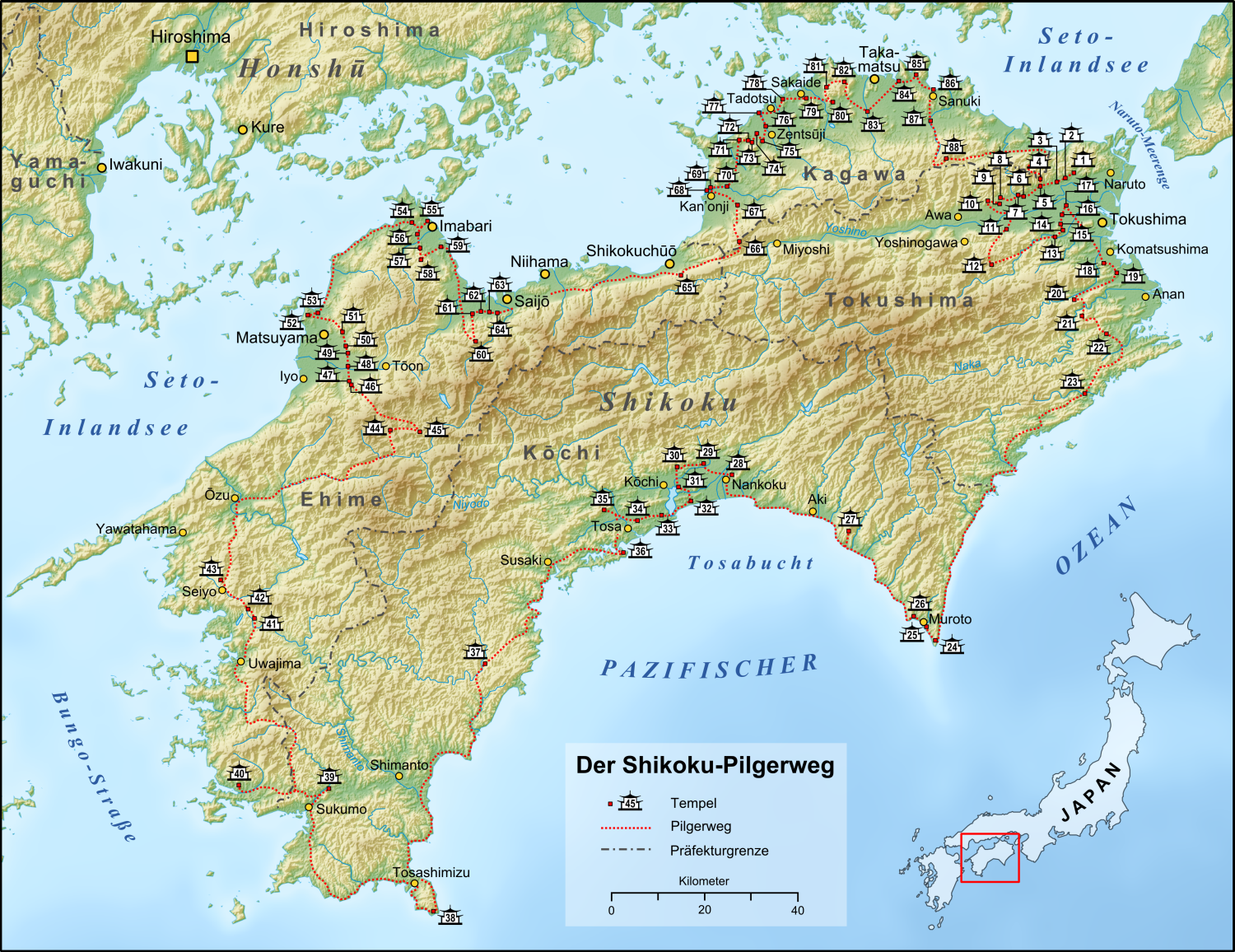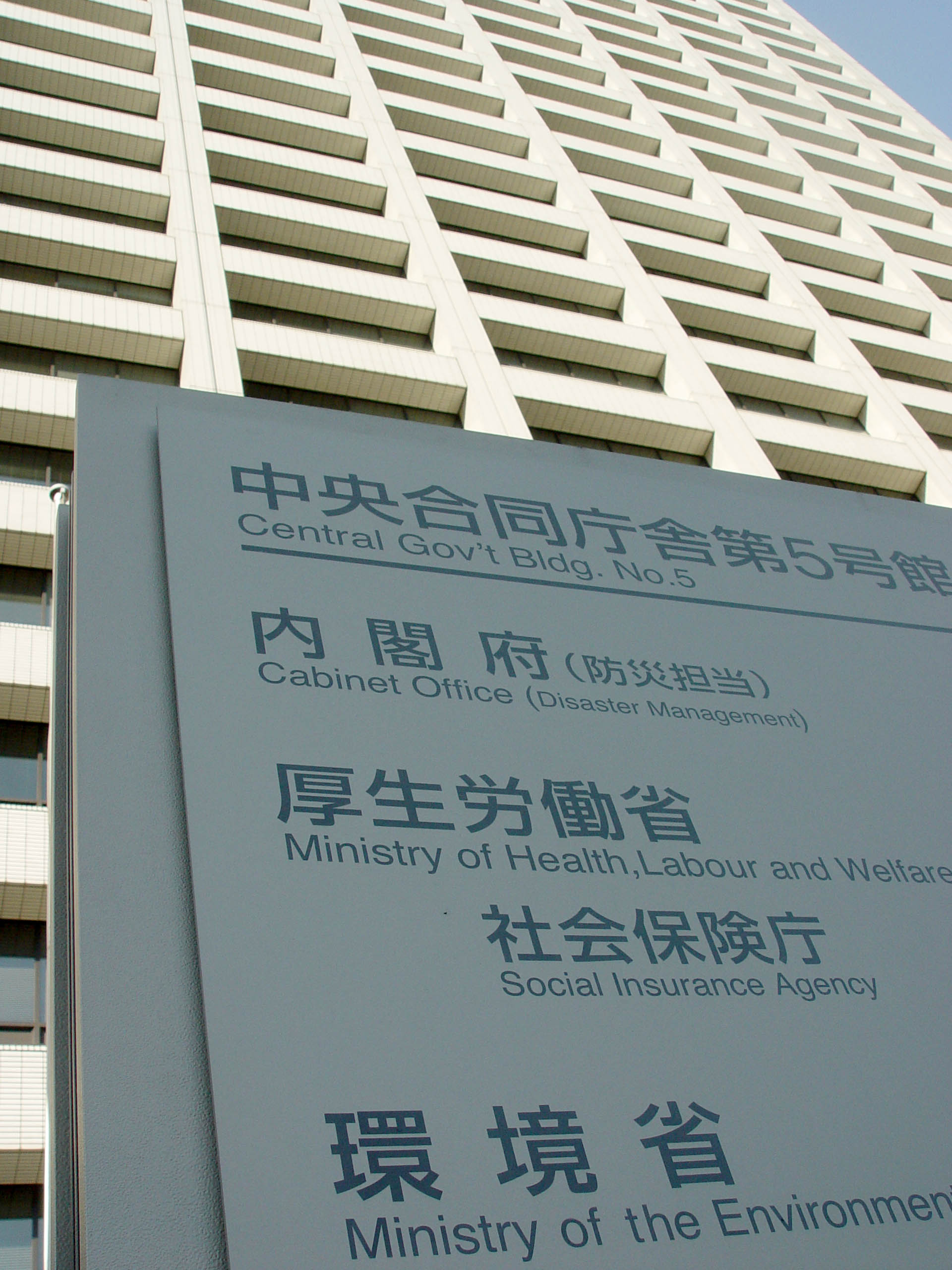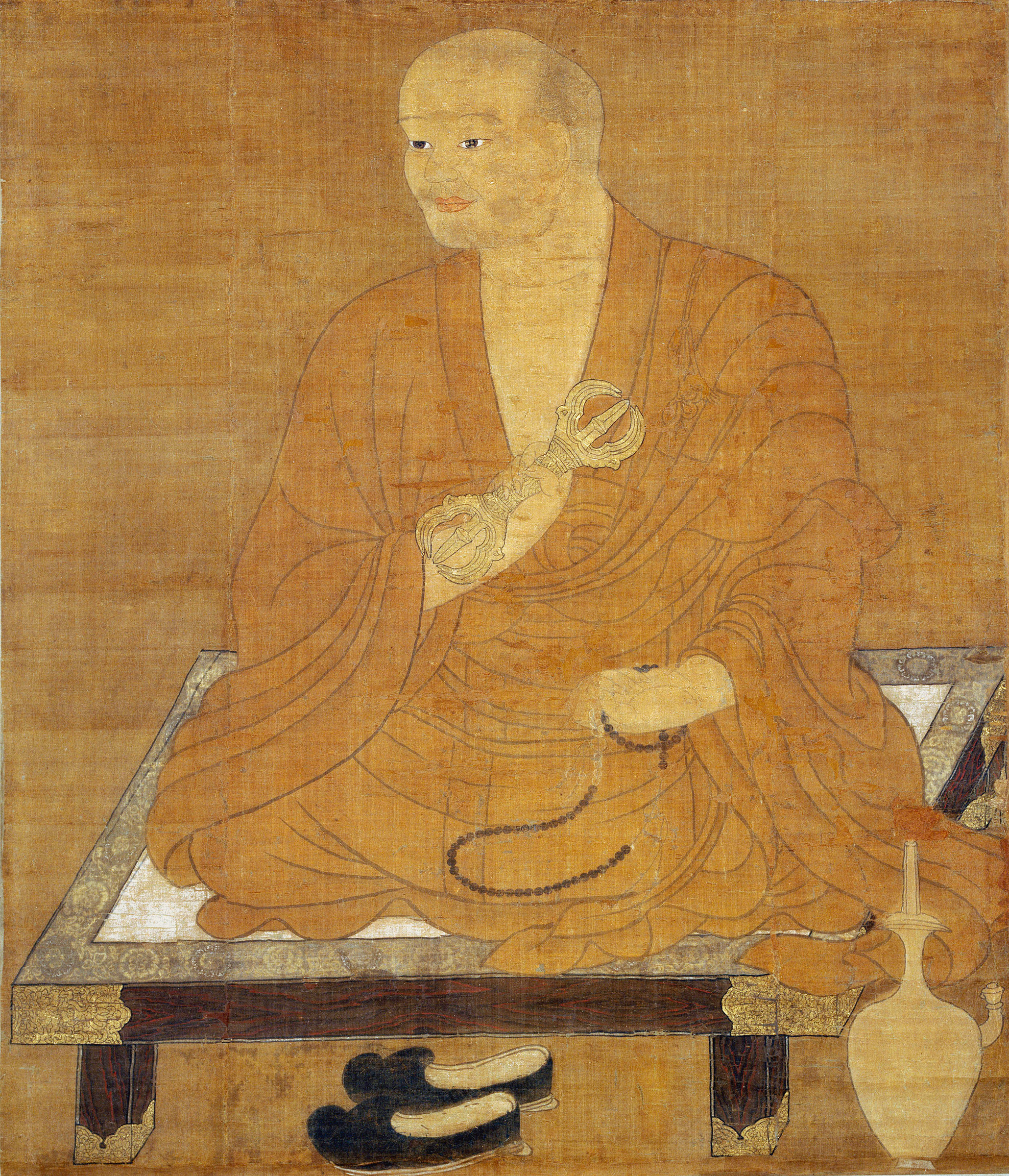|
┼īkubo-ji
is a Shingon temple in Sanuki, Kagawa Prefecture, Japan. It is Temple 88 on the Shikoku 88 temple pilgrimage. Pilgrims leave their kong┼Ź-zue The is a wooden staff carried by ''yamabushi'' and pilgrims on the Shikoku Pilgrimage in Japan. The ''kong┼Ź-zue'' is said to represent the body of K┼½kai and to support the pilgrim along the way; as such it is treated with respect, having its " ... at the temple when completing the circuit. The ┼īkubo-ji temple bell and pilgrim bells have been selected by the Ministry of the Environment as one of the 100 Soundscapes of Japan. See also * Shikoku 88 temple pilgrimage * 100 Soundscapes of Japan References Buddhist temples in Kagawa Prefecture Shingon Buddhism Buddhist pilgrimage sites in Japan Shikoku Pilgrimage Sites {{Japan-religious-struct-stub ... [...More Info...] [...Related Items...] OR: [Wikipedia] [Google] [Baidu] |
Kong┼Ź-zue
The is a wooden staff carried by ''yamabushi'' and pilgrims on the Shikoku Pilgrimage in Japan. The ''kong┼Ź-zue'' is said to represent the body of K┼½kai and to support the pilgrim along the way; as such it is treated with respect, having its "feet" washed and being brought inside at the end of each day's journey. It is inscribed with the chant ''Namu-Daishi-Henj┼Ź-Kong┼Ź'' and ''D┼Źgy┼Ź-Ninin'' or "We two pilgrims together". By another tradition it is carried aloft when crossing a bridge so that it does not touch the ground and wake K┼Źb┼Ź Daishi. Pilgrims leave their ''kong┼Ź-zue'' at ┼īkubo-ji, the final temple, upon completion of the circuit. There is an occasional funerary practice in Shikoku and other parts of Japan whereby the decedent is dressed as a pilgrim and placed in the casket along with a staff and pilgrim's stamp book (''n┼Źky┼Źch┼Ź'') for their final journey. See also Oizuru (garment) is one of the sacred garments of the traditional dress of Japanese Japanese ma ... [...More Info...] [...Related Items...] OR: [Wikipedia] [Google] [Baidu] |
Shikoku Pilgrimage
The or is a multi-site pilgrimage of 88 temples associated with the Buddhist monk K┼½kai (''K┼Źb┼Ź Daishi'') on the island of Shikoku, Japan. A popular and distinctive feature of the island's cultural landscape, and with a long history, large numbers of pilgrims, known as , still undertake the journey for a variety of ascetic, pious, and tourism-related purposes. The pilgrimage is traditionally completed on foot, but modern pilgrims use cars, taxis, buses, bicycles, or motorcycles, and often augment their travels with public transportation. The standard walking course is approximately long and can take anywhere from 30 to 60 days to complete. In addition to the 88 "official" temples of the pilgrimage, there are 20 ''bekkaku'' (ÕłźµĀ╝) temples, which are officially associated with the Shikoku Pilgrimage (and hundreds more ''bangai'' (ńĢ¬Õż¢) temples, simply meaning "outside the numbers," which are not considered part of the official 88). To complete the pilgrimage, i ... [...More Info...] [...Related Items...] OR: [Wikipedia] [Google] [Baidu] |
Sanuki, Kagawa
is a Cities of Japan, city in Kagawa Prefecture, Japan. , the city had an estimated population of 46,016 in 20847 households and a population density of and a population density of 290 persons per km┬▓. The total area of the city is . Geography Sanuki is located in northeast Ehime Prefecture, on the island of Shikoku, facing the Seto Inland Sea to the north, and the Sanuki Mountains to the south. The city lies just east of the prefecture capital, Takamatsu. Neighbouring municipalities Kagawa Prefecture *Takamatsu, Kagawa, Takamatsu *Higashikagawa, Kagawa, Higashikagawa *Miki, Kagawa, Miki Tokushima Prefecture *Mima, Tokushima , Mima * Awa, Tokushima , Awa Climate Sanuki has a Humid subtropical climate (K├Čppen ''Cfa'') characterized by warm summers and cool winters with light snowfall. The average annual temperature in Sanuki is 15.5 ┬░C. The average annual rainfall is 1606 mm with September as the wettest month. The temperatures are highest on average in Januar ... [...More Info...] [...Related Items...] OR: [Wikipedia] [Google] [Baidu] |
100 Soundscapes Of Japan
In 1996, as part of its efforts to combat noise pollution and to protect and promote protection of the environment, the Ministry of the Environment designated the . There were 738 submissions received from all over the country and the 100 "best" were selected after examination by the Japan Soundscape Study Group. These soundscapes are intended to function as symbols for local people and to promote the rediscovery of the sounds of everyday life. The follow-up Sixth National Assembly on Soundscape Conservation was held in Matsuyama in 2002. See also * Soundscape ecology * Ecoacoustics * Biophony * World Soundscape Project * 100 Landscapes of Japan (Heisei era) References External links * {{in lang, ja}Ministry of the Environment - 100 Soundscapes of Japan*100 Soundscapes of Japan - List in English with map (6G) Japanese culture Environment of Japan Lists of places in Japan Japan Japan ( ja, µŚźµ£¼, or , and formally , ''Nihonkoku'') is an island country in East As ... [...More Info...] [...Related Items...] OR: [Wikipedia] [Google] [Baidu] |
Shingon
file:Koyasan (Mount Koya) monks.jpg, Shingon monks at Mount Koya is one of the major schools of Buddhism in Japan and one of the few surviving Vajrayana lineages in East Asia, originally spread from India to China through traveling monks such as Vajrabodhi and Amoghavajra. Known in Chinese as the Tangmi (; the Esoteric School in Tang Dynasty of China), these esoteric teachings would later flourish in Japan under the auspices of a Buddhist monk named Kūkai (), who traveled to Tang China to acquire and request transmission of the esoteric teachings. For that reason, it is often called Japanese Esoteric Buddhism, or Orthodox Esoteric Buddhism. The word ''shingon'' is the Kan-on, Japanese reading of the Traditional Chinese characters, Chinese word ('), which is the translation of the Sanskrit word ("mantra"). History Shingon Buddhist doctrine and teachings arose during the Heian period (794-1185) after a Buddhist monk named Kūkai traveled to China in 804 to study Esote ... [...More Info...] [...Related Items...] OR: [Wikipedia] [Google] [Baidu] |
Kagawa Prefecture
is a prefecture of Japan located on the island of Shikoku. Kagawa Prefecture has a population of 949,358 (as of 2020) and is the smallest prefecture by geographic area at . Kagawa Prefecture borders Ehime Prefecture to the southwest and Tokushima Prefecture to the south. Takamatsu is the capital and largest city of Kagawa Prefecture, with other major cities including Marugame, Mitoyo, and Kan'onji. Kagawa Prefecture is located on the Seto Inland Sea across from Okayama Prefecture on the island of Honshu, which is connected by the Great Seto Bridge. Kagawa Prefecture includes Sh┼Źdoshima, the second-largest island in the Seto Inland Sea, and the prefecture's southern land border with Tokushima Prefecture is formed by the Sanuki Mountains. History Kagawa was formerly known as Sanuki Province. For a brief period between August 1876 and December 1888, Kagawa was made a part of Ehime Prefecture. Battle of Yashima Located in Kagawa's capital city, Takamatsu, the mounta ... [...More Info...] [...Related Items...] OR: [Wikipedia] [Google] [Baidu] |
Japan
Japan ( ja, µŚźµ£¼, or , and formally , ''Nihonkoku'') is an island country in East Asia. It is situated in the northwest Pacific Ocean, and is bordered on the west by the Sea of Japan, while extending from the Sea of Okhotsk in the north toward the East China Sea, Philippine Sea, and Taiwan in the south. Japan is a part of the Ring of Fire, and spans Japanese archipelago, an archipelago of List of islands of Japan, 6852 islands covering ; the five main islands are Hokkaido, Honshu (the "mainland"), Shikoku, Kyushu, and Okinawa Island, Okinawa. Tokyo is the Capital of Japan, nation's capital and largest city, followed by Yokohama, Osaka, Nagoya, Sapporo, Fukuoka, Kobe, and Kyoto. Japan is the List of countries and dependencies by population, eleventh most populous country in the world, as well as one of the List of countries and dependencies by population density, most densely populated and Urbanization by country, urbanized. About three-fourths of Geography of Japan, the c ... [...More Info...] [...Related Items...] OR: [Wikipedia] [Google] [Baidu] |
Ministry Of The Environment (Japan)
The is a Cabinet-level ministry of the government of Japan responsible for global environmental conservation, pollution control, and nature conservation. The ministry was formed in 2001 from the sub-cabinet level Environmental Agency established in 1971. The Minister of the Environment is a member of the Cabinet of Japan and is chosen by the Prime Minister, usually from among members of the Diet. In March 2006, the then-Minister of the Environment Yuriko Koike, created a ''furoshiki'' cloth to promote its use in the modern world. In August 2011, the Cabinet of Japan approved a plan to establish a new energy watchdog under the Environment Ministry, and the Nuclear Regulation Authority was founded on September 19, 2012. Organization * Minister's Secretariat (Õż¦ĶćŻÕ«śµł┐) * (ńĘÅÕÉłńÆ░Õóāµö┐ńŁ¢ńĄ▒µŗ¼Õ«ś) * Global Environment Bureau (Õ£░ńÉāńÆ░ÕóāÕ▒Ć) * Environment Management Bureau (µ░┤Ńā╗Õż¦µ░ŚńÆ░ÕóāÕ▒Ć) * Nature Conservation Bureau (Ķć¬ńäČńÆ░ÕóāÕ▒Ć) * (ńÆ░ÕóāÕåŹńö¤Ńā╗Ķ│ćµ║ÉÕŠ¬ń ... [...More Info...] [...Related Items...] OR: [Wikipedia] [Google] [Baidu] |
Buddhist Temples In Kagawa Prefecture
Buddhism ( , ), also known as Buddha Dharma and Dharmavinaya (), is an Indian religion or philosophical tradition based on teachings attributed to the Buddha. It originated in northern India as a -movement in the 5th century BCE, and gradually spread throughout much of Asia via the Silk Road. It is the world's fourth-largest religion, with over 520 million followers (Buddhists) who comprise seven percent of the global population. The Buddha taught the Middle Way, a path of spiritual development that avoids both extreme asceticism and hedonism. It aims at liberation from clinging and craving to things which are impermanent (), incapable of satisfying ('), and without a lasting essence (), ending the cycle of death and rebirth (). A summary of this path is expressed in the Noble Eightfold Path, a training of the mind with observance of Buddhist ethics and meditation. Other widely observed practices include: monasticism; "taking refuge" in the Buddha, the , and the ; and ... [...More Info...] [...Related Items...] OR: [Wikipedia] [Google] [Baidu] |
Shingon Buddhism
Shingon monks at Mount Koya is one of the major schools of Buddhism in Japan and one of the few surviving Vajrayana lineages in East Asia, originally spread from India to China through traveling monks such as Vajrabodhi and Amoghavajra. Known in Chinese as the Tangmi (; the Esoteric School in Tang Dynasty of China), these esoteric teachings would later flourish in Japan under the auspices of a Buddhist monk named Kūkai (), who traveled to Tang China to acquire and request transmission of the esoteric teachings. For that reason, it is often called Japanese Esoteric Buddhism, or Orthodox Esoteric Buddhism. The word ''shingon'' is the Japanese reading of the Chinese word ('), which is the translation of the Sanskrit word ("mantra"). History Shingon Buddhist doctrine and teachings arose during the Heian period (794-1185) after a Buddhist monk named Kūkai traveled to China in 804 to study Esoteric Buddhist practices in the city of Xi'an (), then called Chang-an, at ... [...More Info...] [...Related Items...] OR: [Wikipedia] [Google] [Baidu] |
Buddhist Pilgrimage Sites In Japan
Buddhism ( , ), also known as Buddha Dharma and Dharmavinaya (), is an Indian religion or philosophical tradition based on teachings attributed to the Buddha. It originated in northern India as a -movement in the 5th century BCE, and gradually spread throughout much of Asia via the Silk Road. It is the world's fourth-largest religion, with over 520 million followers (Buddhists) who comprise seven percent of the global population. The Buddha taught the Middle Way, a path of spiritual development that avoids both extreme asceticism and hedonism. It aims at liberation from clinging and craving to things which are impermanent (), incapable of satisfying ('), and without a lasting essence (), ending the cycle of death and rebirth (). A summary of this path is expressed in the Noble Eightfold Path, a training of the mind with observance of Buddhist ethics and meditation. Other widely observed practices include: monasticism; " taking refuge" in the Buddha, the , and the ; and ... [...More Info...] [...Related Items...] OR: [Wikipedia] [Google] [Baidu] |




